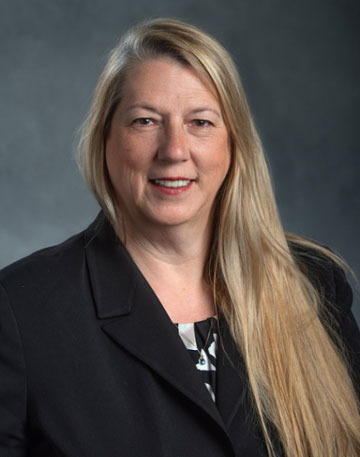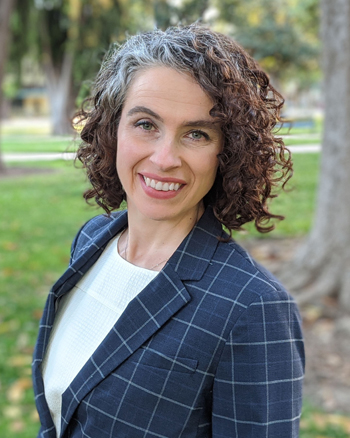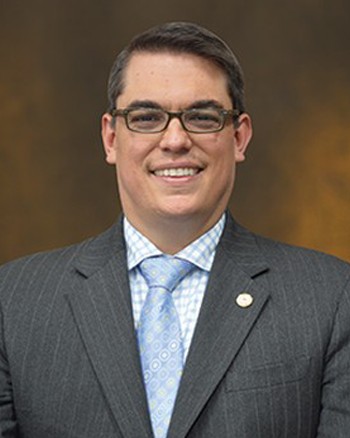MSU Mass Timber STEM facility wins Forest Stewardship Council Leadership Award
Design and Build Award acknowledges university, project team for creating the state’s first mass timber building

East Lansing, Mich. -- A leading forest-certification organization has acknowledged Michigan State University (MSU) for creating the state-of-the art STEM Teaching and Learning Facility – the Great Lake State’s first mass timber building. The Forest Stewardship Council (FSC) Leadership Award in the building and construction category honors MSU and five project partners for innovation and excellence in standing up the new classroom and laboratory facility, which celebrated its grand opening in September.

“For the STEM Facility, MSU envisioned and created a transformative building that represents the MSU commitment to its students – providing collaborative, innovative spaces while embracing the past, the present and the future of learning,” said Amy Butler, MSU’s Sustainability Director. “Using mass timber for this project aligns with MSU’s role as a land grant and top tier research institution that teaches and builds a sustainable economy through leading by design, demonstrates innovative building approaches, and inspires others to take action to solve the world’s complex problems.”
With its 2021 Leadership Awards, FSC – an international non-profit forest-certification organization – recognizes uncommon excellence that advances responsible, forest management and forest conservation. The inclusion of MSU’s STEM Facility is a nod to the building’s extensive use of sustainable mass timber.
“So proud of Michigan State University for being recognized for its design innovation in building the state’s first mass-timber facility!” said U.S. Senator Debbie Stabenow of Michigan. “This building stands as a tribute to Michigan’s ingenuity and leadership. It is proof that we can protect the planet and grow the economy at the same time.”
Mass timber is an umbrella term for a variety of panelized, engineered wood building materials such as large cross-laminated timber (CLT) panels and glue-laminated (glulam) columns and beams with an array of structural and decorative uses in buildings. Well-established in parts of Europe, Mass timber is gaining popularity in North America – especially for structural purposes where its lighter weight, typically faster construction timeline, and lower carbon foot make it a great substitute for – or complement to – steel or concrete, the materials that most commonly comprise the structure of large buildings.

“Mass timber unites our forests with our cities and towns by creating beautiful buildings that are an important part of efforts to solve climate change,” said Sandra Lupien, Director of MassTimber@MSU, which mobilizes education, science, outreach, and communication to advance mass timber construction and manufacture in Michigan and the surrounding region. "Plus, design elements like exposed mass timber cultivate the type of warm, bright, airy, and energizing environment that makes the MSU STEM facility feel full of possibilities.”
“Trees are a renewable resource that absorb carbon dioxide from the atmosphere and store it in their trunks, branches, roots, and forest soil,” said Richard Kobe, Chair of the MSU Department of Forestry. “Mass timber continues to store much of that carbon, keeping it out of the atmosphere, where it would contribute to climate change. The 3,100 cubic meters of sustainably grown and harvested mass timber used in the MSU STEM Facility store about 1,856 metric tons of carbon dioxide equivalents – that's like avoiding nearly 4.7 million miles driven by an average vehicle or not burning more than 2 million pounds of coal.”

Since the STEM facility is the land-grant university’s first new classroom building in over 50 years, MSU wanted to create a high-profile structure that would house state-of-the-art classrooms and (wet and dry) laboratories and centralize these gateway STEM courses under a single roof to provide new students with an appealing home base. MSU selected a prominent site next to MSU’s Spartan Stadium and opted for an innovative re-use approach for the building’s core, which is built around a boiler from MSU's decommissioned Shaw Lane coal-fired power plant. Collaboration between the University’s Infrastructure, Planning, and Facilities team and academics from the Department of Forestry and the School of Planning, Design, and Construction led to the University’s decision to select a mass timber and steel hybrid structural system for the two new classroom and laboratory wings that comprise about 117,000 square feet of new construction.
“MSU has a long tradition of establishing high standards for its construction projects that focus on life-cycle cost,” said John LeFevre, Director of Planning, Design, and Construction with MSU’s Department of Infrastructure, Planning, and Facilities. “We challenged the STEM architects and construction managers to look at alternative framing systems for this project and the economics of using MT construction were competitive. Then, considering all other functional and aesthetic aspects of the system, the leadership team was able to fully support it.”

The resulting facility represents an inspirational landmark that emphasizes the value of STEM curriculum, serves as a transformational learning environment, and – as Michigan’s first mass timber building – serves as a beautiful bastion of innovative and sustainable building design.
“The STEM building will have a great positive impact on Michigan’s construction industry, serving as a physical place where contractors can learn the finer points of building with mass timber in an emerging market,” said George Berghorn, Assistant Professor of Construction Management at MSU. “Mass timber projects require highly integrated project teams, fine-tuned logistics management, strong coordination among trades, and reworked contract language to ensure that wood is protected once it is installed.”

The MassTimber@MSU program se developing case studies to share these lessons with members of the architecture, engineering, and construction community throughout the United States.

The FSC Leadership Awards celebrate forest owners, builders, architects, retailers, paper mills, manufacturers, environmental organizations, and many others who contribute to the movement toward responsible sourcing and forest management. In addition to acknowledging the University, FSC also awarded MSU’s project partners on the STEM Facility whose dedication to the mass timber vision made the building come to life: Granger Construction (General Contractor), IDS (Integrated Design Solutions – Architect/Engineer), Ellenzweig (Architect), Chantiers Chibougamau (Mass Timber Supplier), and Christman Constructors, Inc. (Erectors).
“The depth and breadth of the award winners this year is truly inspiring,” said Chris McLaren, Chief Marketing Officer of FSC US. “With growing concerns about climate change and biodiversity, these leaders show that responsible forest management and sourcing are critical parts of any sustainability initiative.”



 Print
Print Email
Email




